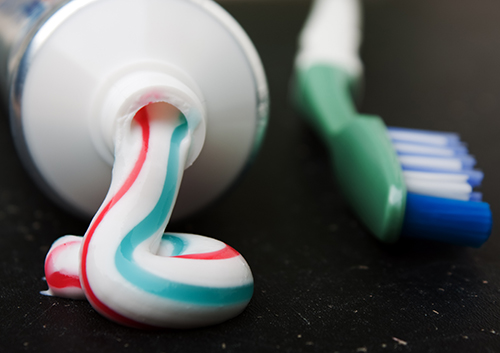Diastema, or, Mind the Gap!
May 13th, 2020

Diastema is a medical term meaning “space between”—or what Dr. Hudis and our team less formally call a gap between the teeth. Such gaps are common for children as they make the transition from baby teeth to adult teeth, and usually close when all the permanent teeth arrive. But not always!
Sometimes a gap, usually between the upper front teeth, stays with you into adulthood, but doesn’t affect your perfectly heathy teeth. Sometimes a diastema develops due to medical conditions or trauma. Whether you would like to close a gap for cosmetic reasons, or need to address gaps that have developed because of dental problems, your treatment will depend on the causes of the diastema.
- The Relationship of Jaws and Teeth
Most of the time, we think of braces as straightening crooked teeth. For many braces wearers, the jaw can’t accommodate all of the adult teeth without crowding. But it’s also possible to have too much space for incoming teeth, and this can lead to a gap between two or more teeth. Orthodontic treatment is a common choice to close this kind of gap, using braces or clear aligners to move the teeth closer together.
- Prominent Labial Frenulum
The labial frenulum is a band of muscular tissue that connects the upper lip and the top of the gums. If it is too large, tissue can extend beyond the top of the front teeth. A gap develops when the front teeth simply can’t meet because of the tissue between them. Oral surgery can reduce the size of the frenulum, if necessary, and often orthodontic treatment is the go-to option to close the diastema.
- Small Teeth or Small Gap
Occasionally, a few teeth are noticeably smaller than their neighbors. Bonding, veneers, and crowns can be used to enlarge these teeth, making them proportionate to the teeth around them. These treatments can also be successful in reducing a gap between the front teeth.
- Missing Teeth
Sometimes people are born missing a tooth. Sometimes people lose a tooth to injury or decay. And while the space left by a missing or lost tooth is a noticeable gap in itself, the remaining teeth can shift to fill the void, causing other gaps to develop as well. A dental implant or bridge can both replace a missing tooth and maintain the normal spacing of the teeth that surround it.
- Gum Disease
Left untreated, periodontitis (gum disease) can damage or even destroy the bone tissue which holds and supports the teeth. This, in turn, leads to “tooth mobility,” or loose teeth. Spaces between the teeth become more noticeable and larger over time. After the gum disease is treated, patient and dentist can explore options for reducing or eliminating spaces between the teeth.
- Harmful Oral Habits
Tongue thrusting and thumb sucking are two habits that can affect the alignment of the front teeth. Both behaviors pressure the teeth to move forward, which can cause separations between them. Learning how to change these behaviors will help prevent or stop the expansion of a diastema and potentially serious malocclusions (bad bites).
If you would like to discuss your diastema for aesthetic reasons, talk to Dr. Hudis for ways to reduce or eliminate the gap. If your diastema is the result of a medical condition, we will be able to recommend treatment options available at our Princeton, NJ office. If you’re teeth and gums are healthy, and you enjoy the individuality of your diastema . . .
- Embrace the Space!
A diastema can be a signature look for you and your smile. Normal brushing, flossing, and regular dental care will keep your smile bright, healthy, and uniquely you. And if you’re happy, healthy, and confidant, why, there’s no reason to mind the gap at all!







